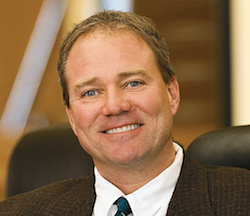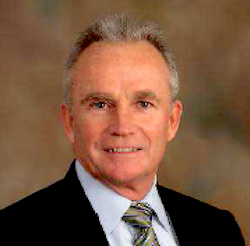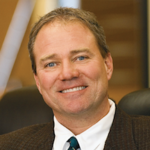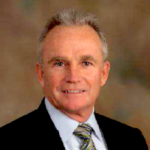
“At some time in the last 10 years we moved into turbulence ….A time of turbulence is a dangerous time, but its greatest danger is the temptation to deny reality ….A time of turbulence is also one of great opportunity for those who can understand, accept and exploit the new realities. It is above all a time of opportunity for leadership.”
— Peter Drucker
Management consultant and author Peter Drucker shared those words in 1980, and they ring true even more so today for many industries, including the senior living market. Many, if not most, senior living organizations and facilities are facing new challenges as they reposition to serve generational and demographics changes, new preferences, emerging medical procedures, healthcare reform and more. Adding to that complexity is the fact that many facilities that were once state of the art are now desperately in need of examination to determine their best application.
The board plays a critical role in making the needed shifts for a senior living organization — or at least it should. Based on our experience, we have identified 10 ways to align your board as you consider your options for repositioning.
1. Strategic thinking and planning
Strategic planning affects all aspects of organizational life, including programs, services, recruitment and position in the marketplace. Creating a future image with a concrete vision and operational plan is dependent on an ongoing assessment of accurate internal and external environments.
Many organizations are good at creating aggressive plans during “the good times” but withdraw or scale back during turbulent times. We would argue the times of calm anchor in a safe-harbor are over, and turbulence is the new norm.
What many for-profit and nonprofit organizations do not do well is identify the most important hazards and opportunities early enough, formulate creative strategic initiatives nimbly enough or implement them fast enough. Creating the needed culture in the board room to think strategically, act quickly and accept greater risk tolerance in our new reality requires linking strategic and operational planning. Measurable and flexible operational plans, and thorough business plans, budgets and policies are expected in today’s board room — not just for large organizations but for all success-driven senior living teams.
2. Knowledge and education.
Boards that excel typically embrace the qualities of a continuous learning organization. Board members stay well-informed about the external environment, including what is going on in the industry and cultural shifts that are taking place in the region. Additionally, they increasingly understand what is occurring within their organization, including trends, programs offered and personnel and facility issues. As well, they increasingly grasp the governance role that they fulfill. Through an impactful onboarding process and continuous learning, you can impact organizational effectiveness as your board considers repositioning alternatives.
3. Adhere to your beliefs.
Vibrant boards must make decisions in light of their mission, vision and values. When boards gather, we suggest they have these items highly visible as both a reminder and as a framework for decisions. Many boards place their mission statement at the top of their agenda, as a symbol of their dedication to the mission.
Thomas J. Watson Jr., former chair of IBM, stated, “I firmly believe that any organization, in order to survive and achieve success, must have a sound set of beliefs on which it premises all its policies and actions. Next, I believe that the most important single factor in corporate success is faithful adherence to those beliefs. And finally, I believe that if an organization is to meet the challenges of a changing world, it must be prepared to change everything about itself except those beliefs as it moves through corporate life.”
4. Match poignant plans with proper resources.
Effective boards connect the vision and plans for repositioning with the board’s network of people, their own expertise, financial support and a reasonable time to plan and execute. James Collins and Jerry Porras coined the term BHAG, which stands for Big Hairy Audacious Goal, in their book, “Built to Last: Successful Habits of Visionary Companies.” Collins and Porras state that a BHAG is a long-term goal that changes the very nature of a business’ existence and provides a rallying point for the organization.
That is true, but we must be certain that we provide the appropriate resources to carry it out. Otherwise, that is like someone walking in to your office and telling you to run a four-minute mile today. (The current men’s world record is 3:43.13.)
5. Accountability.
Outstanding boards focus on results. They consider their organizations’ progress towards goals and evaluate the performance of key services and programs. Although inputs and actions are important, the board’s emphasis must be on delivering the desired outcomes to achieve excellence and thus obtain expected outcomes.
6. Self-evaluation.
Boards should hold themselves to very high standards, both personally and as a team with a shared mission. Many boards hold facilitated sessions with outside experts to not only aid them in identifying growth opportunities, but also to aid them in continuing to keep areas of strength as great assets. Also, by considering both the overall board and one’s personal performance as a board member, there is greater motivation to add value and serve the organization to the greatest degree possible. This effort often shines a spotlight on the need for change and repositioning.
7. Board recruiting and revitalization.
Outstanding boards revitalize through attentive recruitment. They include important, and appreciate diverse, voices at the board table. One of the best practices of strong boards is to use a board diversity and skills matrix as they consider new board members. Identifying those new board members who bring expertise to potential repositioning is vital.
8. Create a culture of questioning.
Boards that thrive in times of change make sure that questions can be asked in the boardroom and beyond. It is always a sad sight when the board agenda is sped through and then you hear board members huddled at the trunks of their cars in the parking lot asking clarifying questions. There are many new concepts as you consider how to position your facility for the future, so be sure you provide the space and mindset that allows for questions.
9. Know your roles.
Board members who understand their general and specific roles will function well as a group. They understand their fiduciary responsibilities that facilitate any necessary repositioning, as well as set expectations that go along with committee structure. Additionally, it is important that there is clear communication surrounding the differentiation between the responsibilities of the executive director/CEO and the chair of the board.
10. Presence and engagement.
If a board works in a vacuum, then it is difficult to grasp what is taking place. As repositioning is considered, it is important for board members to understand the need for timely and well thought out decisions. Lack of quorums, not reading emails, and physically being present but not be engaged cannot only demoralize the leadership team, but it can delay progress and ultimately cost the organization more money.
As you consider your repositioning possibilities, use this list of ideas to be sure that your board is properly aligned and ready to address the changes and challenges that all successful senior living organizations conquer.
Randy Bremhorst (pictured above) is vice president of design at Hoffman Planning, Design & Construction Inc. and is a member of the Society for the Advancement of Gerontological Environments. With more than 25 years of experience in the design and construction industry, Bremhorst is a graduate of the University of Notre Dame’s School of Architecture, which included a year in the Rome Studies Program.
 Dennis Russell (pictured) is a consultant with Mennonite Health Services. Russell guides organizations to convert strategic priorities into operational plans, monitors industry trends and helps organizations manage market repositioning. He has more than 27 years of healthcare management experience.
Dennis Russell (pictured) is a consultant with Mennonite Health Services. Russell guides organizations to convert strategic priorities into operational plans, monitors industry trends and helps organizations manage market repositioning. He has more than 27 years of healthcare management experience.





